
Staples of northerners’ traditional new year feast
Latest
Tet, the lunar New Year Festival which is also the most and the longest for Vietnamese, is an occasion for family members to gather, talk and enjoy delicious food after a hardworking year. Preparing a feast for Tet requires attentive efforts as Vietnamese believe it reflects a New Year full of happiness and prosperity.
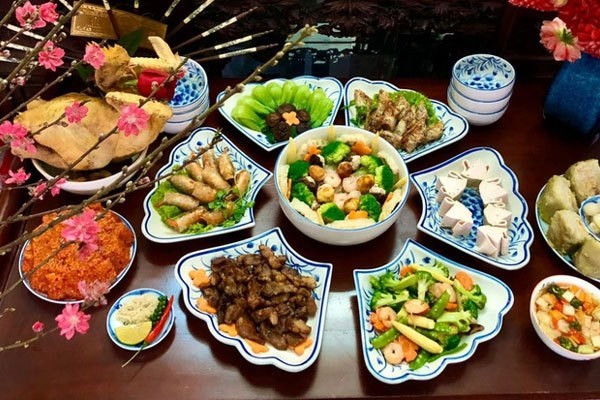 |
| A typical example of a traditional new-year feast of people in the north of Vietnam. (Photo: tintuconline.com.vn) |
In northern Viet Nam where traditional cuisine is very rich and sophisticated, there is a certain selection of dishes that almost every family will have on this special occasion, namely banh chung (square sticky rice cake), xoi gac (sticky rice with spiny gourd), dua hanh (pickled shallots), gio lua (pork bologna), ga luoc (boiled chicken), nem ran (fried spring rolls), thit dong (jellied meat), and canh mang (dried bamboo shoot soup).
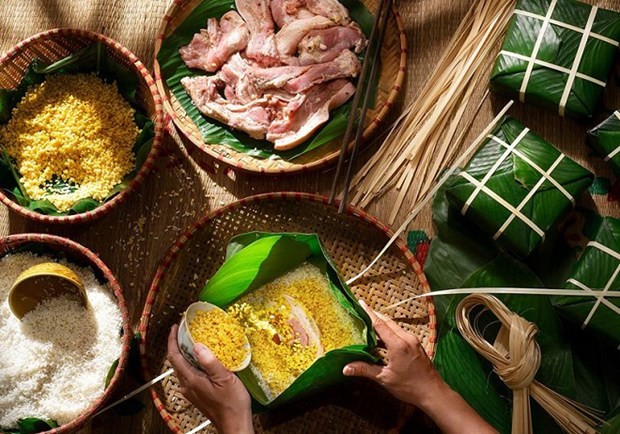 |
| Staples of northerners’ traditional new-year feast hinh anh 2Making "banh chung" (square sticky rice cake). (Photo: baodansinh.vn) |
“Banh chung” is a must for a Tet feast of Vietnamese in the north. Representing gratitude towards the earth and the sky, the dish is a harmonious combination of sticky rice, sweet green beans, mildly spicy pepper, and fatty pork slices which creates a remarkable New Year’s taste.
“Xoi gac” is a semi-sweet dish made from steamed glutinous rice, mixed in coconut milk and naturally coloured orange-red from the spiny gourd. In the Vietnamese culture, red is the colour that brings good luck so people choose to eat "xoi gac" during Tet in the hope that the luck and goodness will come.
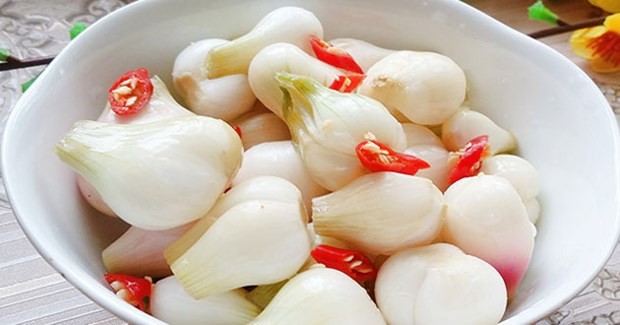 |
| "Dua hanh" (pickled shallots). (Photo: baodansinh.vn) |
“Dua hanh” is essential to the meal. Its sweet and sour taste make the dish suitable to be served with other signature dishes like “banh chung” and “thit dong”. It also serves as a natural medicine for better digestion after high protein meals during Tet.
“Gio lua”, made from only two ingredients – lean pork and fish sauce, is a dish for everyone. Pork must be pounded until it becomes pasty. Two or three tablespoons of fish sauce are added to the pork paste before it is wrapped in banana leaves in a cylindrical shape and boiled for about one hour. It represents people’s hope for happiness and prosperity in the New Year.
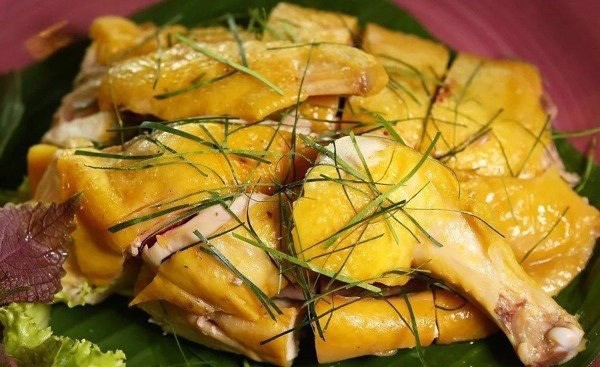 |
| "Ga luoc” (boiled chicken). (Photo: baodansinh.vn) |
Northerners respectfully display “Ga luoc” on the altar as many believe the dish represents a lucky new start to the family. The chicken in whole must be boiled in water until the skin turns shiny and a bright yellow. The dish is often served with salt and chopped lime leaves. It symbolises fullness and well-being.
“Nem ran” is one of the most popular Vietnamese delicacies that must be made by skillful cooks from fresh ingredients. It is a harmonious mixture of many ingredients like fatty pork, shallots, Jew’s ear mushroom, Shiitake mushroom, glass noodles, egg, and carrot, all chopped and mixed with spices. The mixture is then stuffed in thin, white rice paper and rolled and deep fried in medium heat until they achieve the right crispy texture and yellow colour.
“Thit dong” perfectly suits the chilly and slightly rainy weather during Tet. It is usually made from pig’s shank, ear and skin, and Shiitake mushroom, stewed for hours and then let cool before it is kept in a fridge. The white fatty surface of the dish makes it taste like a jelly.
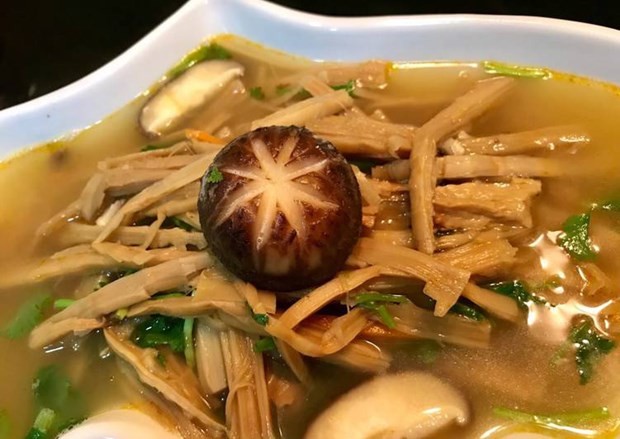 |
| “Canh mang” (dried bamboo shoot soup). (Photo: baodansinh.vn) |
“Canh mang” is one of the most favourite dishes of the northerners during the holiday. Cut into small pieces, the raw tough dried bamboo shoots must be cooked with pork legs or ribs for hours to make it soft. At the top of each sizzling bowl of soup is some poached green onion.













